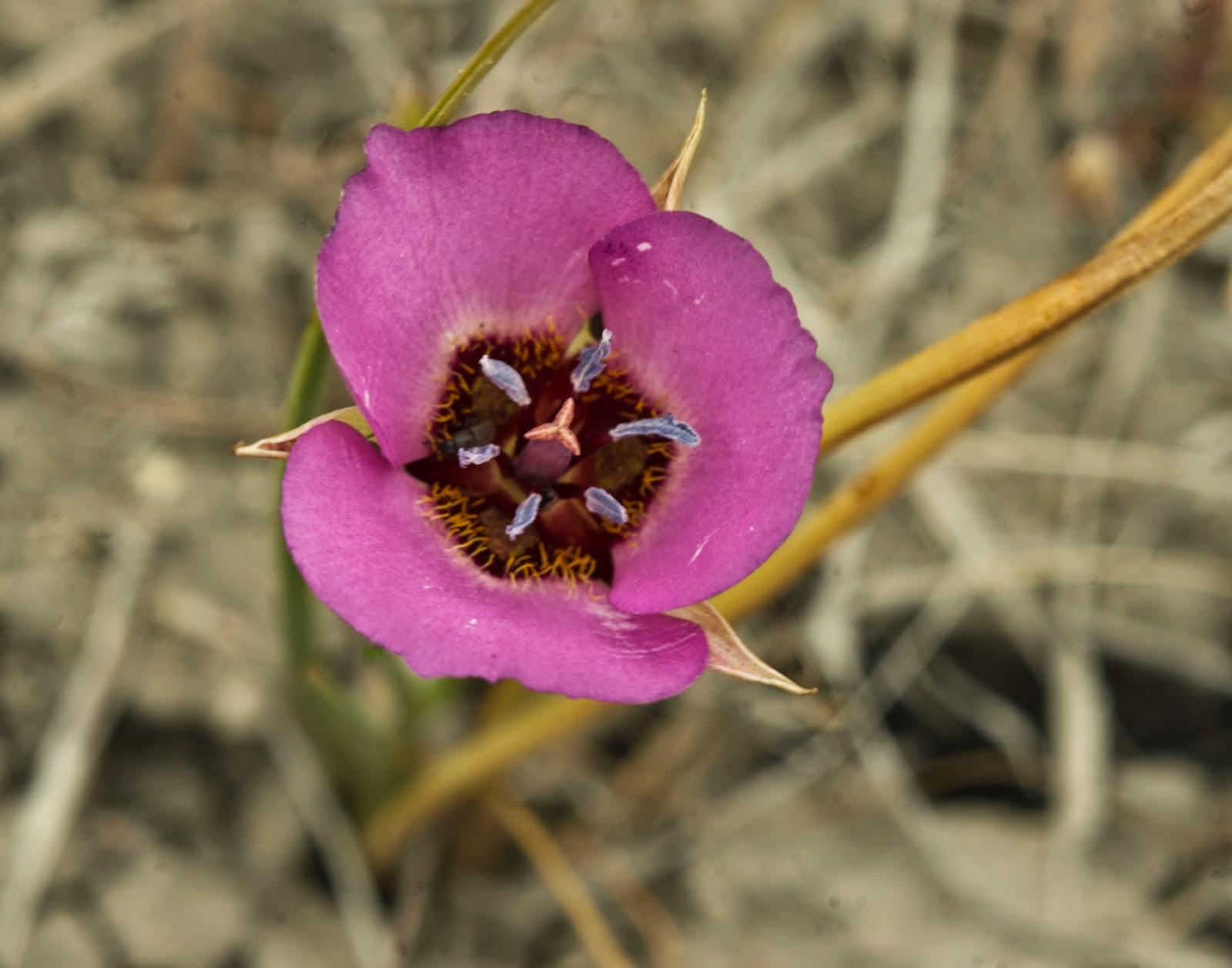To a Californian botanist, Tejon Ranch has a strong allure
as an ecologically intact, biogeographic crossroads that until recently has
been under-explored for native plant diversity.
That attraction is heightened by the ecological transitions that occur
within the Ranch and the potential for evolution across such a varied
landscape. From those perspectives,
Tejon Ranch is ideally situated to study and preserve plant diversity and the
processes that give rise to it. The
Ranch spans major floristic units and climatic regions, with the
Mediterranean-like climate of the California Floristic Province (CA-FP) to the
west and Mojave Desert to the east, and much local variation in climatic and
soil conditions associated with finer-scale topographic, elevational, and
geological diversity. These
considerations make the Tejon Ranch one of the most important areas for plant
conservation in our rapidly changing state.
 |
| Steve's pincushin (Chaenactis stevioides), photo courtesy of Bruce Baldwin |
Evolutionary transitions between desert and
Mediterranean-like conditions, and between low-elevation and high-elevation
settings, have been important in a wide diversity of Californian plant groups
and are of interest in our ongoing studies of plant diversification at the Jepson
Herbarium (UC Berkeley). In the
sunflower family (composites), some major lineages that are endemic to western
North America are excellent subjects for examining such shifts. A particularly notable example is well
represented at Tejon Ranch: the pincushion genus, Chaenactis. We are currently
revisiting Kyhos’s (1965) classic investigation of the origins of desert annual
pincushions from CA-FP ancestors by comparing DNA sequences and examining other
fine-scale differences between populations, with extensive sampling across the
distributions of these plants. Recent
sampling at the Tejon Ranch filled a critical geographic gap in our coverage of
the CA-FP/desert border and spanned four key species for understanding
CA-FP/desert transitions within Chaenactis
(C. fremontii, C. glabriuscula, C.
stevioides, and C. xantiana). Significant late-season precipitation made
collecting on the eastern slopes of the range much more successful than
expected.
 |
| Pringle's wooly sunflower (Eriophyllum pringlei), photo courtesy of Bruce Baldwin |
Another plant group of interest for examining major ecological
shifts is the woolly sunflower group, Eriophyllum (woolly sunflower), Pseudobahia (sunburst flowers), and Syntrichopappus (Fremont’s gold). We were fortunate to sample both species of Syntrichopappus on the same trip, which
was quite a coup considering the miniscule size and lack of previous
collections of S. lemmonii on the
Ranch. Ecological transitions in both
woolly sunflowers and pincushions have included shifts in life history from
annual to perennial, in the opposite direction once “allowed” by some plant
anatomists, but as now resolved for a number of other Californian plant groups
that have migrated into montane or coastal regions.
especially the lineage including
While collecting, we were able to enjoy the spectacular
spring bloom on the desert side of the Ranch, including a surprisingly
floriferous wetland with the rare Palmer’s mariposa lily in full bloom, unusual
plant associations in the Mediterranean-desert transition, and a remarkably
stout form of valley oak.
Many thanks to Mike White and Nick Jensen for ensuring the
success of our visit and for sharing their knowledge of the ranch and its
magnificent flora. The Tejon Ranch
Conservancy should be commended for their efforts to promote study and
preservation of the botanical values at Tejon Ranch.
 |
| Palmer's mariposa lily (Calochortus palmeri) blooming in 2013 |
Dr. Baldwin is the Curator of the Jepson Herbarium and a Professor in the Department of Integrative Biology at UC Berkeley. A native of central coastal California, he attended Arroyo Grande High School in Arroyo Grande, California. He first became interested in plant diversity through backpacking and exploring in the floristically-rich Santa Lucia and San Rafael Mountains of central western California. He received his B.A. degree in Biological Sciences from U. C. Santa Barbara in 1981. He received his M.S. (1985) and Ph.D. (1989) degrees in Botany from U. C. Davis (with Donald Kyhos) and conducted postdoctoral work at the University of Arizona, Tucson (with Michael Donoghue and Robert Robichaux). He was a member of the Botany faculty at Duke University for two years before moving to Berkeley in 1994.

